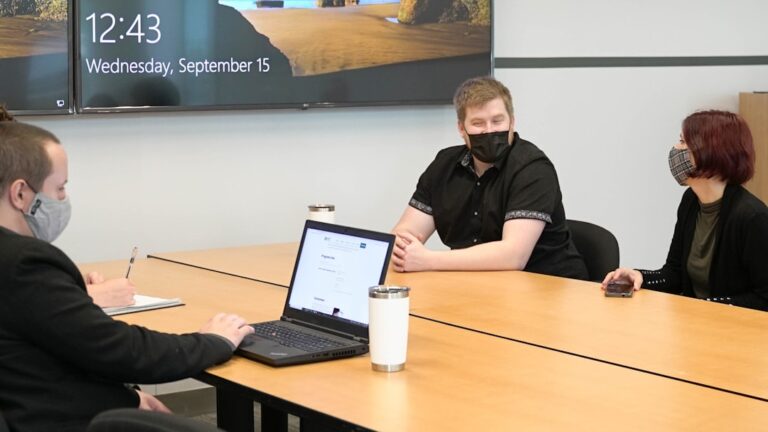Intentional living is a philosophy that emphasizes the importance of making conscious choices that align with one’s values, beliefs, and goals. It is about being deliberate in how one spends time, energy, and resources, rather than allowing life to unfold passively. This approach encourages individuals to reflect on what truly matters to them, fostering a sense of purpose and direction.
By engaging in intentional living, people can cultivate a life that resonates with their core principles, leading to greater satisfaction and fulfillment. At its core, intentional living requires self-awareness and introspection. Individuals must take the time to examine their priorities and aspirations, often through practices such as journaling or meditation.
This process can reveal insights about what brings joy and meaning to life, guiding decisions that enhance overall well-being. For instance, someone who values family may choose to prioritize quality time with loved ones over career advancement, while another person might focus on personal growth through education or travel. The beauty of intentional living lies in its adaptability; it can be tailored to fit the unique circumstances and desires of each individual.
Balancing Technology and Intentional Living
Establishing Boundaries with Technology
To counteract the negative effects of digital saturation, individuals must actively seek ways to integrate technology into their lives without compromising their values. One effective strategy is to establish specific times for technology use, such as designating periods for checking emails or scrolling through social media. This structured approach can minimize distractions during moments meant for reflection or connection with others.
Mindful Technology Use
Utilizing technology mindfully can also enhance the intentional living experience. Engaging with content that aligns with personal interests or values can transform technology from a source of distraction into a tool for enrichment. For example, following educational podcasts or joining online communities that foster personal growth can have a positive impact on one’s life.
Transforming Technology into a Tool for Enrichment
By being intentional with technology use, individuals can create a more balanced and fulfilling life. By setting boundaries, using technology mindfully, and engaging with content that aligns with personal values, individuals can harness the power of technology to support their goals and aspirations, rather than allowing it to control their lives.
Setting Intentions in a Tech-Driven World

Setting intentions in a tech-driven world involves a conscious effort to define what one wants to achieve while navigating the complexities of modern life. This process begins with identifying specific goals that resonate with personal values. For instance, an individual may set an intention to prioritize health by committing to regular exercise or adopting a balanced diet.
By articulating these intentions clearly, individuals create a roadmap that guides their actions and decisions. Moreover, technology can play a supportive role in this process. Various apps and digital tools are designed to help users track their progress toward their intentions.
For example, fitness apps can monitor physical activity levels, while mindfulness applications can facilitate meditation practices. By leveraging these resources, individuals can stay accountable to their goals and maintain focus on their intentions amidst the distractions of daily life. However, it is crucial to remain vigilant about how technology is used; the aim should be to enhance one’s journey rather than allow it to become a source of stress or overwhelm.
Practicing Mindfulness in the Digital Age
| Benefits of Mindfulness | Challenges of Digital Age |
|---|---|
| Reduced stress and anxiety | Constant distractions |
| Improved focus and concentration | Information overload |
| Enhanced self-awareness | Social media addiction |
| Better emotional regulation | Decreased attention span |
Mindfulness is a practice rooted in being present and fully engaged in the moment, which can be particularly beneficial in today’s fast-paced digital landscape. The constant barrage of information and stimuli can lead to feelings of anxiety and disconnection from one’s surroundings. By incorporating mindfulness techniques into daily routines, individuals can cultivate a greater sense of awareness and presence, ultimately enhancing their capacity for intentional living.
One effective way to practice mindfulness is through meditation, which encourages individuals to focus on their breath and observe their thoughts without judgment. This practice can be adapted for the digital age by utilizing guided meditation apps or online resources that provide structured sessions. Additionally, mindfulness can be integrated into everyday activities—such as eating or walking—by paying attention to sensations and experiences in the moment.
For instance, savoring each bite during a meal or noticing the feeling of the ground beneath one’s feet while walking can foster a deeper connection to the present moment.
Creating Boundaries with Technology
Establishing boundaries with technology is essential for maintaining an intentional lifestyle in a world where digital distractions are ubiquitous. Without clear limits, individuals may find themselves spending excessive time on devices, leading to feelings of burnout or disconnection from real-life experiences. To counteract this tendency, it is important to define specific parameters around technology use that align with personal values and intentions.
One practical approach is to implement “tech-free” zones or times within one’s home or daily routine. For example, designating mealtimes as device-free moments encourages meaningful conversations and connections with family members or friends. Similarly, setting aside certain hours in the evening for relaxation without screens can promote better sleep hygiene and mental well-being.
By consciously creating these boundaries, individuals can reclaim their time and focus on activities that nurture their intentions and foster deeper connections with themselves and others.
Cultivating Meaningful Connections in a Tech-Driven World

In a society increasingly reliant on technology for communication, cultivating meaningful connections can sometimes feel like a daunting task. While social media platforms offer opportunities for interaction, they often lack the depth and authenticity found in face-to-face relationships. To foster genuine connections in a tech-driven world, individuals must prioritize quality over quantity in their social interactions.
One effective strategy is to engage in activities that promote deeper connections with others. This could involve participating in community events, joining clubs centered around shared interests, or volunteering for local organizations. These experiences not only provide opportunities for meaningful interactions but also align with the principles of intentional living by fostering a sense of community and belonging.
Additionally, when using technology for communication, individuals should strive for authenticity by opting for video calls or voice messages instead of relying solely on text-based communication. This approach allows for more nuanced conversations and helps build stronger relationships.
Finding Purpose and Fulfillment in Intentional Living
Finding purpose and fulfillment through intentional living requires ongoing reflection and commitment to personal growth. It involves recognizing that fulfillment is not solely derived from external achievements but also from aligning one’s actions with core values and passions. Individuals who engage in this process often report higher levels of satisfaction and well-being as they navigate life’s challenges with clarity and purpose.
To cultivate this sense of purpose, individuals may benefit from exploring new interests or revisiting old passions that resonate with them. For instance, someone who has always enjoyed painting might take up art classes as a way to express creativity and connect with others who share similar interests. Additionally, setting aside time for self-reflection—whether through journaling or quiet contemplation—can help clarify what brings joy and meaning to life.
By actively pursuing activities that align with personal values, individuals can create a fulfilling life that reflects their true selves.
Overcoming Challenges and Pitfalls in Intentional Living
While the journey toward intentional living is rewarding, it is not without its challenges. One common pitfall is the tendency to become overly rigid in one’s intentions or goals. This rigidity can lead to feelings of frustration or disappointment when circumstances change or when progress is slower than anticipated.
To navigate these challenges effectively, individuals must cultivate flexibility and adaptability in their approach to intentional living. Another challenge lies in the influence of societal expectations and norms that may conflict with personal values. For example, societal pressures may encourage individuals to prioritize career success over personal well-being or relationships.
To overcome this obstacle, it is essential to regularly reassess one’s values and intentions in light of external influences. Engaging in open conversations with trusted friends or mentors can provide valuable perspectives and support during this process. Ultimately, embracing the journey of intentional living involves recognizing that it is not about perfection but rather about making conscious choices that align with one’s authentic self amidst life’s complexities.
FAQs
What is intentional living?
Intentional living is the practice of making conscious choices and taking deliberate actions to align your life with your values and goals.
How can technology be used to practice intentional living?
Technology can be used to practice intentional living by helping individuals set goals, track their progress, manage their time, and stay focused on their priorities.
What are some examples of tech tools for intentional living?
Examples of tech tools for intentional living include goal-setting apps, habit-tracking apps, time management tools, mindfulness and meditation apps, and digital decluttering tools.
How can technology be a hindrance to intentional living?
Technology can be a hindrance to intentional living when it leads to distractions, information overload, and a lack of presence and mindfulness in daily life.
What are some tips for using technology mindfully in intentional living?
Some tips for using technology mindfully in intentional living include setting boundaries for tech use, practicing digital detoxes, and using tech tools intentionally and purposefully.


















